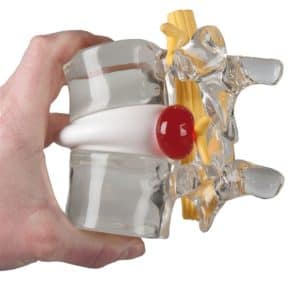I can forsee that this blog might provoke some comments!
Please read it for what it is. This is an attempt to address a deeply ingrained myth about low back problems that can be a really solid roadblock for improvement – that your back goes ‘out’.
One of the most common controversies about neck and back problems is this concept of things going ‘out’ or ‘subluxation’.
Yes, you can dislocate or sublux joints in traumatic situations eg shoulder and even spinal joints.
If it happens in the spine it is (thankfully) relatively rare and in the realm of orthopaedic specialist management.
Can spinal joints be subluxed in everyday circumstances when you are going about your daily business? The evidence would say no.

Adjustment vs manipulation - same same
Just to be clear, the term spinal manipulative therapy (SMT) encompasses chiropractic ‘adjustment’ and physiotherapy ‘manipulation’.
They are the same techniques, just with different philosophy behind them. Plus there are some SMT techniques that physios don’t do, like general rotation techniques on the neck.
It is important to remember that feeling better as the result of spinal manipulative therapy isn’t proof that something was ‘out’, as it is often portrayed.
In fact, a chiropractor called Preston Lang said something that is quite profound that applies to all healthcare professions:
‘The fact that patients swear by us does not mean we are actually helping them. Satisfaction is not the same thing as effectiveness’
That is a really confronting statement for all healthcare practitioners – many of us confuse the two.
What right does a physio have to talk about adjustments?
If it seems like a physio talking about spinal manipulative therapy is going to be biased, consider this.
For a long time and right up until the current day, these SMT techniques are taught at university in our undergraduate course. I learnt them all, practiced them all, and got examined on them all.
There are postgraduate physio courses in manipulative therapy. There are physios who base their practices around using SMT.
So I’m not saying that SMT can’t be effective. For some people it is really effective at regaining movement in a joint. It can be just the right thing for the right problem.
For me, it is more that there are 101 ways of skinning a cat, and I don’t skin that particular cat in that particular way for a variety of reasons.
We help back pain!
In desperate need of a clear plan?
Click below to read more about how we can help you!
What is the evidence for you back going 'out'?
At the bottom of this blog, I have put a reference to an article that was written by four chiropractors in the journal Chiropractic and Osteopathy.
In their introductory statements, they say chiropractors ‘claim to locate, analyze and diagnose a putative spinal lesion known as subluxation and apply the mode of spinal manipulation (adjustment) for correction of this lesion.’
(‘Putative’ – generally considered or reputed to be. I had to look that up!)
Their conclusion was that there is a ‘significant lack of evidence to fulfil the basic criteria of causation. This lack of crucial supportive epidemiologic evidence prohibits the accurate promulgation of the chiropractic subluxation.’
(‘Promulgation’ – the act of speading an idea or belief among many people. I had to look that up too!)
To summarise, these four chiropractors are saying that there is a lack of evidence for the concept of something being ‘out’.
Why does it matter?
I’m not writing this as an exercise in some kind of inter-professional point-scoring, rather I am trying to highlight a popular misconception that exists and continues to be perpetuated in healthcare and in the public that is plain wrong and a potential barrier to improvement.
How can that be a barrier to improvement?
Well, consider this.
Let’s say that you have a belief that your problem is something going ‘out’ and needs to be put back ‘in’ by someone.
I don’t think it is too much of a stretch to see how that concept of something being ‘out’ is going to negatively colour what you think about your back, it’s structure, its strength and its resilience.
It is also going to foster the thought that there is an ongoing need for someone else to do something about it to keep you ‘well’ and on the straight and narrow. this may be good for business, just not good for the consumer.
Summary
Research has shown that what you believe about:
- the problem
- yourself
- your potential to improve
- your degree of control over your problem
- your need for someone else to keep doing things to you to stay well
- how pain works in the body
is all critical to how much pain, discomfort and disability that you experience.
A term like ‘a joint going out’ is not anatomically correct, and it creates the wrong impression about what is wrong and how it will get better.
And it certainly doesn’t help achieve less health practitioner reliance and more self-reliance.
Therefore, it is important that we debunk the myth.
If you are at a dead end with your back pain, we would encourage you to read this article on what to do if the ‘usual’ back pain treatments aren’t working.
Reference
Mitrz A., Morgan L., Wyatt LH, Green L An epidemiological examination of the subluxation construct using Hill’s criteria of causation
Full text article available here: https://www.ncbi.nlm.nih.gov/pmc/articles/PMC3238291/
How do we help if the 'usual' treatments don't help?
If you have had other treatments that haven’t worked, I imagine you’ll be sceptical about seeing yet another practitioner.
We have a step-by-step plan of how we help people with back pain which hasn’t resolved, which you can read by clicking the button below.















